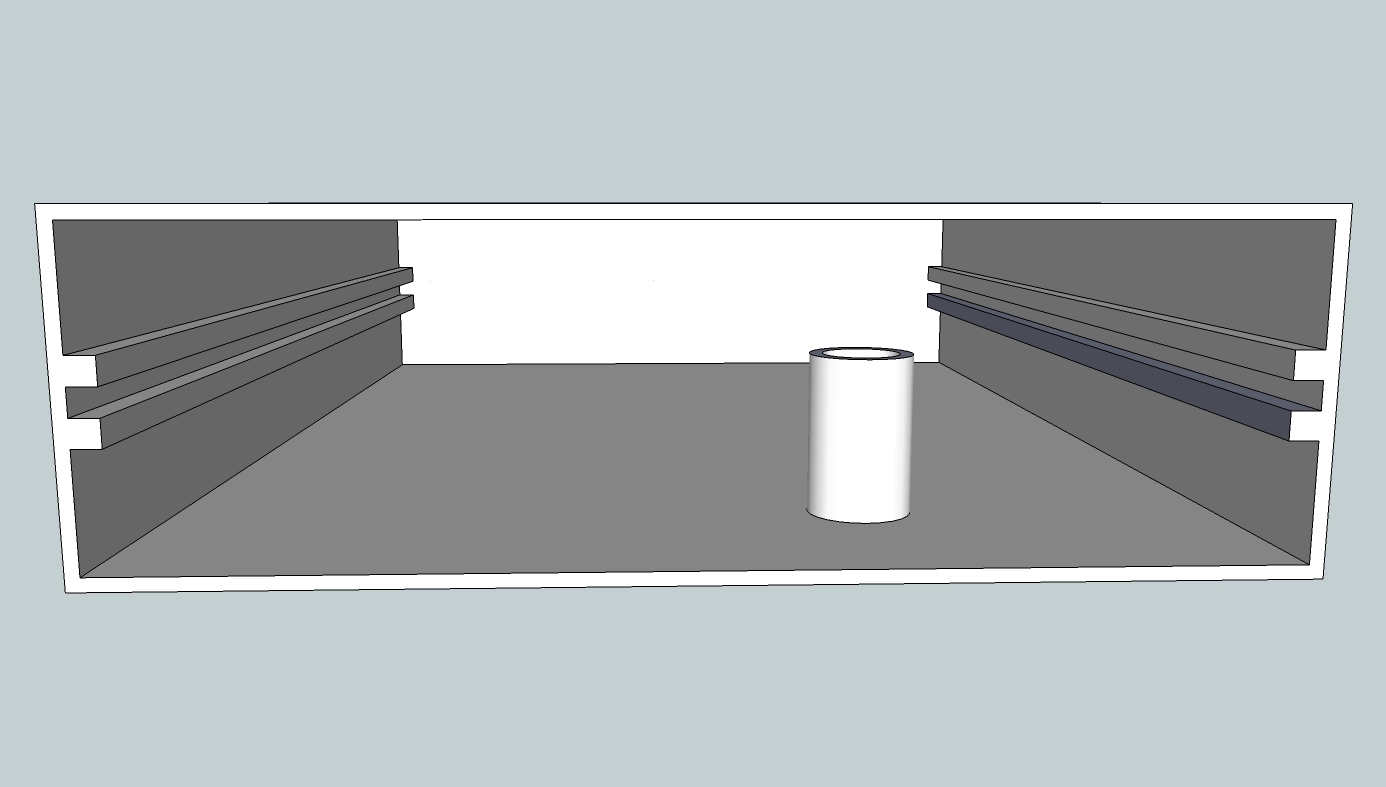Difference between revisions of "Mesh/Meraki Sparky Enclosure Design"
Jump to navigation
Jump to search
| Line 4: | Line 4: | ||
== first pass == | == first pass == | ||
A sketchup drawing. There is a ruby plugin that provides an option to export a sketchup drawing as an STL file. | |||
[[File:Maraki Sparky box-1.jpg|thumbnail|left]] | [[File:Maraki Sparky box-1.jpg|thumbnail|left]] | ||
The idea is for an enclosure that has a slot on the sides into which the Meraki Sparky can slide. Then there might be a single screw that can be inserted from the bottom in order to keep the PCB from sliding out. Next design should have: | The idea is for an enclosure that has a slot on the inner sides into which the Meraki Sparky PCB can slide. Then there might be a single screw that can be inserted from the bottom in order to keep the PCB from sliding out. Next design should have: | ||
* the standoff extending from the top, but short enough to clear the PCB components | * the standoff extending from the top, but short enough to clear the PCB components | ||
* the slots should be near the bottom of the box | * the slide-in slots should be near the bottom of the box | ||
* the opening should have a curved front to accommodate the angled ethernet/power connections | * the opening should have a curved front to accommodate the angled ethernet/power connections | ||
* the back should have a mounting hole for the antenna | * the back should have a mounting hole for the antenna | ||
Revision as of 23:56, 5 December 2013
See Also: Mesh/Inventory
notes about an enclosure for the Maraki Sparky
first pass
A sketchup drawing. There is a ruby plugin that provides an option to export a sketchup drawing as an STL file.
The idea is for an enclosure that has a slot on the inner sides into which the Meraki Sparky PCB can slide. Then there might be a single screw that can be inserted from the bottom in order to keep the PCB from sliding out. Next design should have:
- the standoff extending from the top, but short enough to clear the PCB components
- the slide-in slots should be near the bottom of the box
- the opening should have a curved front to accommodate the angled ethernet/power connections
- the back should have a mounting hole for the antenna
